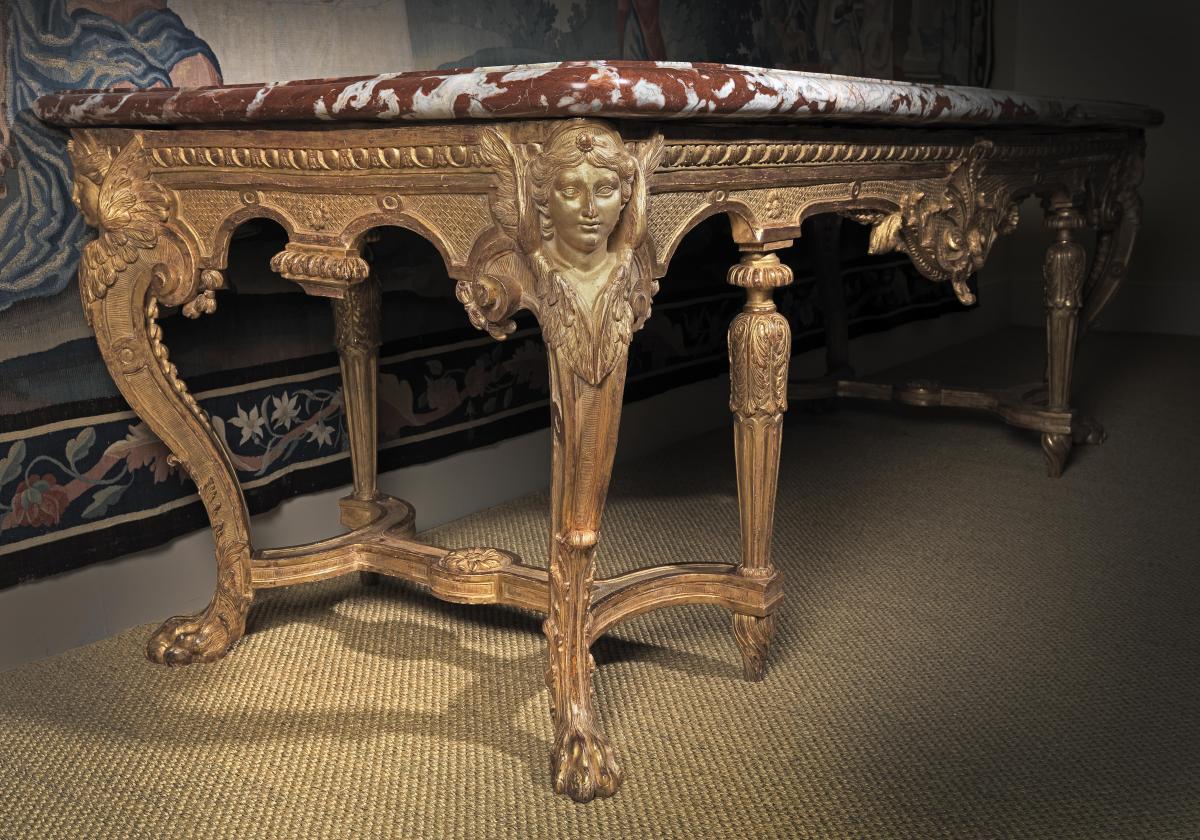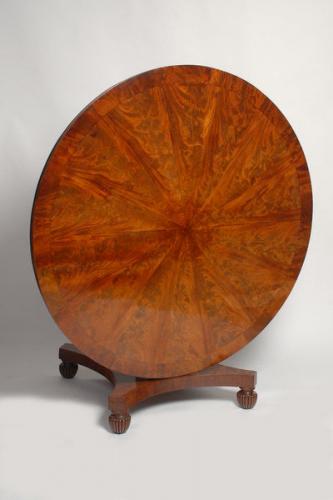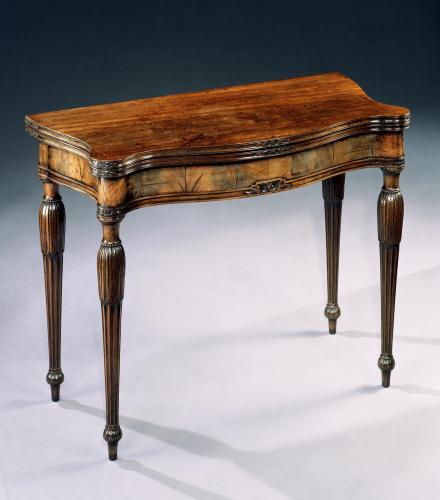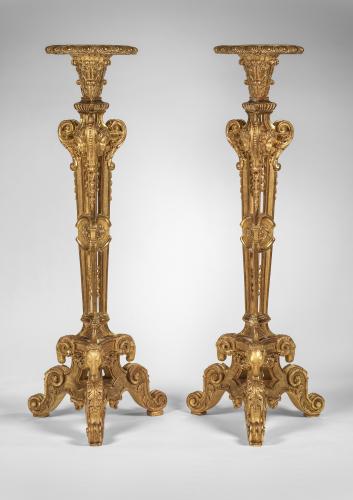




Price on application
This object is eligible for a Certificate of BADA Provenance
The BADA Standard
- Since 1918, BADA has been the leading association for the antiques and fine art trade
- Members are elected for their knowledge, integrity and quality of stock
- Our clients are protected by BADA’s code of conduct
- Our dealers’ membership is reviewed and renewed annually
- Bada.org is a non-profit site: clients deal directly with members and they pay no hidden fees
DESCRIPTION
The massive rectangular marble top supported on a giltwood table base of eight legs, un pied de table à huit pieds, which is how these tables were very simply described during the reign of Louis XIV. Each corner is formed of winged sphinxes heads heading an ‘S’ scroll leg terminating in lion’s paw feet. Subsidiary turned tapering legs, carved with acanthus and gadrooning, are united by an ‘H’ shaped stretcher carved with reeding and sunflower heads. The frieze carved with fielded diamond diaper pattern panels below egg and dart moulding and sunflower heads heading the tapering legs and side panels.
Very few tables of this size have survived. Louis XIV had commissioned, from his early days as an adult King, hundreds of large ceremonial giltwood side tables. At Versailles this became even more important as he had been forced to sell off the silver furniture to pay for his costly foreign wars. The King was constantly updating his palaces and Châteaux. One of the last, the Grand Trianon, known as the Trianon de Marbre[i] was begun by his architect, Jules Hardouin-Mansart (1642-1708) in 1687. By 1688, he became gravely ill and the later stages were handed over to his brother-in-law Robert de Cotte (1656-1735). The Grand Trianon is distinctive for its wonderful use of stone and Languedoc marble, which came from the quarries in the Southwest of France. It is famous for its colonnade of double Languedoc marble columns designed by the King himself and Robert de Cotte. The King took an interest in every aspect of his buildings and worked closely with his Surintendant des Batiments du Roi, the 2nd Marquis de Louvois[ii] and his architects.
Virtually none of the furniture in the Grand Trianon survives, with the exception of the famous commodes by André Charles Boulle, delivered twenty years later in 1708 and discussed below. The original furniture from the 1667-8 building will most probably have been similar in design to the series of tables delivered to the Chateau de Marly in 1683. Although completely different in design to the above table, they are worth looking at in so far as they give considerable insight into the processes involved in their supply to the Garde Meuble du Roi for use at Marly. Fifteen tables of various sizes were supplied in all, each with alabaster tops Albatre de Montahu. Of these, five were of a very large size 7 pieds in 1765 and, by 1770 the measurements had increased to 7’6”. This shows how inaccurate measurements could be in the 18th. Century in the various Inventories compiled during the 18th. Century. The one surviving table, now at Versailles, is actually 8’8”; the green marble top is a 19th. Century replacement.
[i] This replaced the Trianon de Porcelaine which the King had built in 1670 and covered in Dutch Delft. Not only had this exquisite little palace proved too small, but the blue and white facings could not stand up to the severe winters of the time. The structure of the building was retained and the rest of the building constructed on the foundations of other pavilions. This accounts for the rather eccentric shape of the Grand Trianon.
[ii] Francois-Michel le Tellier. 2nd. Marquis de Louvois (1641-1691) He was Surintendant from 1683 to 1691.
Dimensions
242 x 97 x 84 HighThe BADA Standard
- Since 1918, BADA has been the leading association for the antiques and fine art trade
- Members are elected for their knowledge, integrity and quality of stock
- Our clients are protected by BADA’s code of conduct
- Our dealers’ membership is reviewed and renewed annually
- Bada.org is a non-profit site: clients deal directly with members and they pay no hidden fees








